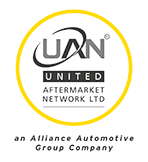
Hits back at claims about HGV efficiency
The EU is being urged to pass new laws that will cut truck emissions in two years, in order to meet the promises made by the industry at the Paris climate conference.
The demands are being driven by an alliance of companies including Nestlé, IKEA and Heathrow Airport, all of whom believe truck fuel efficiency has seen little improvement in the past 20 years and that CO2 levels are not expected to fall before 2050.
In response, the message from Phil Moon, DAF’s marketing director, is clear. “We’re on track to lower carbon emissions,” he said.
Moon claimed that the figures are slightly misleading because there has been a substantial increase in payloads and vehicle weights, as well as road speeds due to goods being moved more quickly. “The suggestion from some quarters is that the EU should be doing more to challenge the design of vehicles by setting more stringent CO2 reduction goals,” stated Moon. “There are obviously opportunities to do that, but there is also the VECTO tool, which allows manufacturers to report CO2 in tonnes/km from 2018, and the willingness and drive from manufacturers to make that happen.
Once you’ve got a comparable value, the market will be influenced by that value and there will be opportunity for fiscal measures and different incentives to encourage the uptake of lower carbon technologies.
“The challenge, in a commercial environment, is that while manufacturers could develop those solutions – such as hybrid trucks – it is difficult for operators to pay a commercial premium because that would disadvantage them,” added Moon. “We’ve got to find the right measure of legislative goals for lower CO2, but also find a way that transport can make it viable to run low carbon technologies – through incentives, access limitations, or encouraging/discouraging lower carbon technologies.”
Moon argued that because the transport industry is very transparent, operators are already choosing the most fuel efficient trucks available to them. “Manufacturers have to keep pushing in terms of fuel efficiency wherever possible, so say that we haven’t made progress underestimates the significant technical hurdles we’ve had to overcome since 1990,” he reasoned.
“We’ve gone from Euro 0 to Euro 6 and maintaining the status quo has been no mean feat. We are already on track to further lower carbon emissions, but it’s always been a balance between delivering that, and a cost effective savings. We know from hybrids that we could deliver between 15-20% fuel saving. But the technology costs so much that it didn’t stack up,” he said.
Indeed, cost is one of the major challenges facing the heavy truck industry. While the EV infrastructure across Britain and the rest of Europe is gathering pace, making zero-emission cars and vans a viable proposition for private customers and urban fleets, take-up for electric trucks is taking much longer, with battery range, development and purchase cost, along with unknown reliability, being potential barriers.
That said, EV technology is moving at such a pace that it surely can’t be long before a true zero-emissions truck becomes a more viable proposition, with American companies such as Tesla and Nikola already looking at ways the technology can be developed for heavier applications. In Europe, both Lidl Supermarkets and Heineken Breweries are already using 18-tonne electric trucks, from E-Force and Emoss, for short range urban work.

 Click here to open the navigation menu
Click here to open the navigation menu